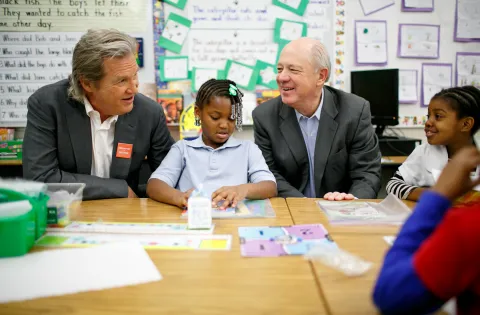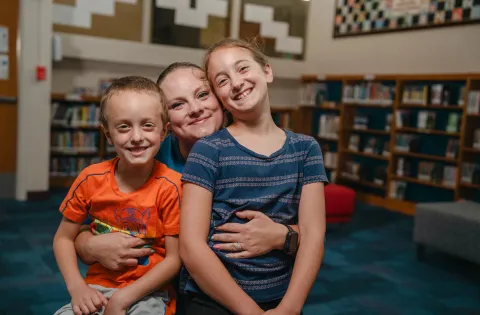Last week, the Biden administration signed an executive order that will make it easier for states and local governments to foster partnerships with nonprofits and restaurants to help feed more children in need during the COVID-19 pandemic. This executive order implements the core provisions of the bipartisan FEED Act, which was endorsed by Share Our Strength, the parent organization of the No Kid Hungry Campaign.
This executive order offers a dual win for our nation: It will help feed hungry kids and support our nation’s restaurant industry, which has taken an economic hit during this crisis. Here’s what you need to know from No Kid Hungry Director of Federal Advocacy Monica Gonzales.

Q: Monica, I know we were excited to endorse the FEED Act. Let's take a step back to talk about the legislation itself. What did it propose and what was its purpose?
The FEED Act is bipartisan legislation drafted to allow FEMA to respond specifically to the COVID-19 pandemic. During natural disasters, FEMA normally responds with its own meal operations for communities in need through existing funds. But, natural disasters are tied to a specific time period and geographic area, and most meals or feeding operations are served in a congregate setting, meaning people gather in one place to eat. Given the nature of this pandemic, the response this time had to look very different.
FEMA typically reimburses 75% of the cost for states to facilitate meal operations, but many states are experiencing budget shortfalls due to the pandemic and this has made it tough for them to lead these operations on a long-term basis. Therefore, many of the current emergency meal operations have been fostered by charitable giving.
The FEED Act removed the budget constraint for state and local agencies and it did this by increasing the federal cost share to be 100% reimbursable. This will allow for these partnerships to be sustainable and will get more meals to kids and vulnerable communities who do not have access during this pandemic.
Q: What exactly did this executive order do to the FEED Act and why is it so critical for hungry kids?
Simply put, this executive order means we won’t have to worry that the FEED Act will languish in legislative limbo. It essentially puts it into practice immediately and officially shifts the cost share from 75% to 100% by the federal government. This means that states and localities can be reimbursed 100% of the cost by FEMA.
This is a game-changer for our country. It means more hungry kids will get the food they need by complementing existing nutrition programs like SNAP, Pandemic EBT and school meals. It’s one more critical tool in our toolbox.
The bonus? Our hope is that more restaurants can participate in these types of meal operations, which will help them weather the economic crisis they’re facing. Chefs have long been partners in our fight to end childhood hunger. These partnerships will deploy those skills and put restaurants to work doing what they do best - feeding people.
Q: This all sounds really great, but what happens next? How do people get the ball rolling with these partnerships and meal operations?
I encourage local jurisdictions - from mayors to state agencies and governors - to move forward with developing their own plans to work with nonprofits and restaurants in their communities and to submit those plans to FEMA for approval. While the FEMA guidance will be helpful in further implementation, there’s no need to wait. They should start those conversations immediately!
Q: Are there any resources you recommend for folks interested in learning more?
No Kid Hungry hosted a reporter town hall with folks on the frontlines of this work, including Nate Mook from World Central Kitchen and Boston chef Douglass Williams, who stepped up early into the pandemic to feed frontline health care workers in his community. It was a robust conversation with a lot of good details. You can have a listen here.


